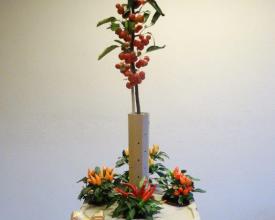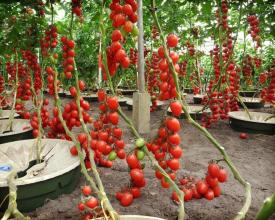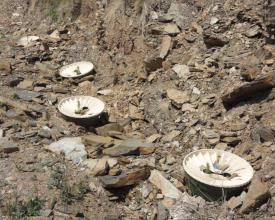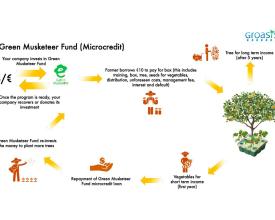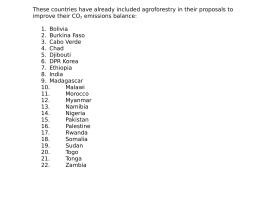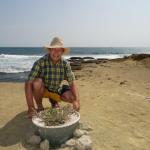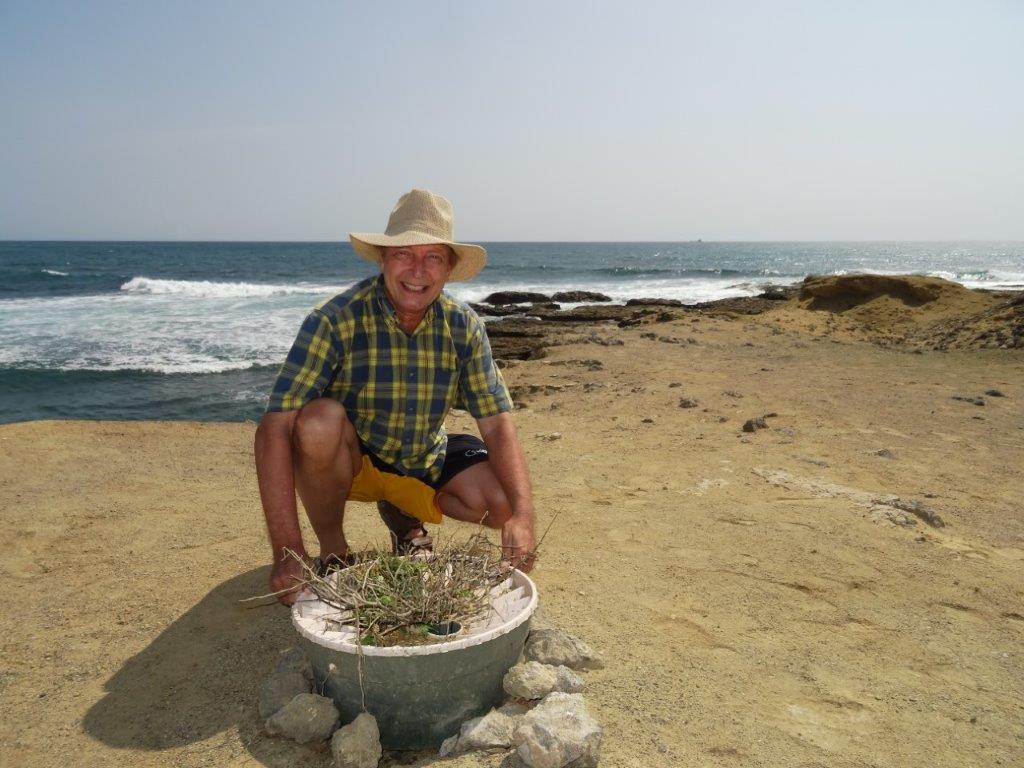
90% de ahorro de agua en la agricultura con el capullo vegetal Growboxx
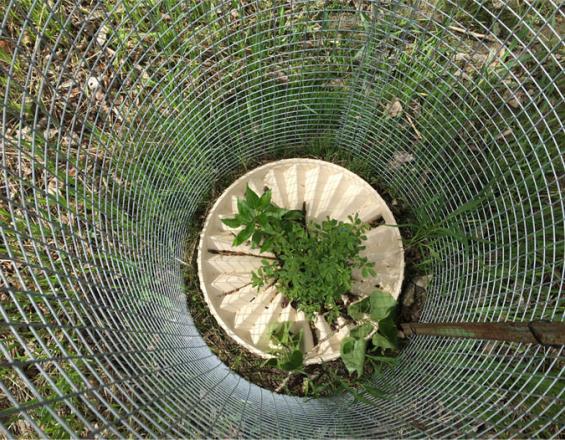
La Tecnología Ecológica de Ahorro de Agua de Groasis consta de 5 pasos que se pueden seguir juntos o cada paso por separado. Funciona según los"beneficios del Triple 90": 90% menos uso de agua, 90% más barato y +90% de tasa de supervivencia. Los pasos son 1) Estimular la infiltración del agua de lluvia en el suelo mediante la realización de 15 kms de mini-terrazas por hora con el Terracedixx / 2) Cavar hoyos de plantación con el taladro capilar que mantiene intacto el sistema capilar del suelo / 3) Utilizar micorrizas Growmaxx para ayudar a mejorar la función de los fertilizantes o sustituirlos / 4) Utilizar el capullo vegetal inteligente Growboxx® y 5) Utilizar el protector vegetal Growsafe contra cabras/ovejas. La tecnología permite plantar árboles productivos (huertos, madera, medicinas, forraje) en combinación con hortalizas. Producen alimentos y generan ingresos a corto plazo que permiten financiar la tecnología mediante microcréditos. La tecnología puede ser utilizada por alfabetizados y analfabetos, es neutra desde el punto de vista del género y no requiere adaptación cultural.
Contexto
Défis à relever
La escasez de agua es un enorme reto para la humanidad. Hoy en día, la agricultura utiliza más del 73% de toda el agua dulce. En África, la cifra supera el 85%. La población mundial pasará de 7.000 a 9.000 millones de personas en 35 años. En general, la riqueza también aumenta, por lo que aumentará el consumo de alimentos. Se espera que el consumo de alimentos aumente aproximadamente un 40% en los próximos 35 años. Para la producción de alimentos necesitamos agua, por lo que el uso de agua para la producción de alimentos también aumentará en un 40% si nuestras tecnologías agrícolas no cambian. La tecnología ecológica de ahorro de agua de Groasis puede ayudar a resolver este problema.
Ubicación
Procesar
Resumen del proceso
El mundo tiene 2.000 millones de hectáreas de tierras secas, degradadas, antaño fértiles, hoy erosionadas. Hasta ahora no era posible plantar esta superficie, ya que se necesita regadío para hacerlo. Además del enorme capital y energía necesarios para el regadío, el mundo tampoco dispone de agua suficiente. La tecnología ecológica de ahorro de agua de Groasis resuelve estos problemas. Es barata, fácil de usar, no necesita pozos ni bombas ni una red de riego ni una red eléctrica. También es fácil de adaptar por las sociedades agrícolas tradicionales. Sólo hay un problema que resolver: los 500 millones de familias rurales pobres potenciales no disponen de capital ni de instrumentos de financiación. La capacidad combinada de plantación de árboles y hortalizas del capullo vegetal Growboxx® resuelve este problema. La compra de un Growboxx®, un árbol, semillas de hortalizas, un protector de plantas y formación puede pagarse fácilmente con un crédito de microfinanciación. El Fondo Mosquetero Verde está negociando ahora con socios para recibir fondos y entregar créditos de CO2 de bajo coste (menos de 1 USD/tonelada) para estos fondos. La compensación de CO2 nos ayudará a financiar la agrosilvicultura y contribuirá a que el suelo vuelva a ser fértil al aumentar el contenido de humus del 0,1% al 4% y, a través de esto, su capacidad de retención de agua y minerales en el próximo siglo.
Bloques de construcción
Triple 90 de ahorro de agua en 5 bloques
La tecnología ecológica de ahorro de agua de Groasis consta de 5 componentes básicos:
1) Capullo vegetal Growboxx®/Waterboxx
cubo inteligente
Proporciona agua a un árbol y a las hortalizas a la vez que crea un microclima saludable. Ambas cajas utilizan un 90% menos de agua y proporcionan una tasa de supervivencia de +90%.
2) (Bio)Growsafe Telescoprotexx
protege las plantas
Protector de plantas contra el calor, las heladas, el viento, las tormentas (de arena) y los animales de pastoreo. Protege las plantas y acelera su crecimiento. Disponible en cartón o polipropileno.
3) Growmaxx Micorrizas
ayuda y/o sustituye al abono
Hongos que alimentan la planta y apoyan un sistema radicular sano. Los fertilizantes contienen sal y en suelo seco a menudo queman las raíces. Micorrizas reemplazar fertilizantes caros (alternativa natural), mientras que el apoyo más rápido de la planta.
4) Perforación capilar
eleva la productividad de la plantación
Máquina utilizada para acelerar la realización de hoyos de plantación dejando intacto el sistema capilar. Cavar hoyos de plantación a mano lleva 15 minutos por hoyo (32 - 40 hoyos al día). El taladro capilar hace 6.000 hoyos al día.
5) Terracedixx
aumenta la infiltración del agua
La máquina se utiliza para hacer mini-terrazas y estimular una mayor infiltración del agua de lluvia en el suelo. Actualmente sólo el 25% del agua (de lluvia) entra en el suelo en zonas degradadas, utilizando el Terracedixx se recoge hasta el 90%.
Factores facilitadores
Cada uno de los 5 pasos puede realizarse individualmente. Uno sólo puede utilizar el capullo Growboxx® planta y dejar el resto.
Por ejemplo, en lugar del protector de plantas Growsafe, utilizar vallas.
En lugar de las micorrizas utilice abono.
En lugar del taladro capilar haga los hoyos de plantación a mano.
En lugar de utilizar el Terracedixx construya las terrazas a mano.
Lección aprendida
Hasta ahora, Groasis ha vendido su tecnología en 42 países azotados por la sequía. Aparte de todas las invenciones tecnológicas, tres temas principales son muy importantes:
1) La formación. Resulta que los usuarios se adaptan inmediatamente a la tecnología. Pero hay que explicarla al menos una vez.
2) Las especies adecuadas en el lugar adecuado. No se puede plantar un manzano en el desierto de Kuwait y no un mango en los países del norte de Europa. La especie elegida tiene que poder adaptarse al clima.
3) La variedad adecuada de hortalizas. Resulta que encontramos inmensas diferencias de productividad entre unas variedades y otras. Por ejemplo, en las mismas circunstancias, una variedad de tomate produce 20 kilos por Growboxx® y otra variedad produce 50 kilos por Growboxx®. Es importante probar las variedades antes de ampliarlas.
Microfinanciación para el capullo vegetal Growboxx
Financiar la plantación de árboles en los países pobres en desarrollo es imposible. Los bancos necesitan garantías, pero en general la propiedad de la tierra es común y no hay kadaster. A menudo el registro de población no está completo, por lo que los bancos no saben dónde vive el prestamista. Por último, los árboles empiezan a producir al cabo de 5 a 7 años y los bancos exigen los intereses y la amortización a partir del primer año, por lo que el prestamista no puede pagar su préstamo. Por esta razón no se plantan suficientes árboles productivos, aunque la agrosilvicultura sería la mejor solución para los países secos y erosionados.
La plantación de árboles en combinación con hortalizas ofrece la posibilidad de microfinanciar la plantación. Los árboles generan un flujo de caja a largo plazo, las hortalizas producen alimentos para la familia y pueden vender su superproducción, que genera un flujo de caja a corto plazo. El flujo de caja a corto plazo les permite pagar su microfinanciación. La microfinanciación puede realizarse con un fondo rotatorio.
La producción de hortalizas, combinada con el uso eficiente del agua, ofrece la posibilidad de reforestar el mundo con árboles productivos.
La microfinanciación puede realizarse mediante un fondo rotatorio. El prestamista presta dinero, lo devuelve en un año y el fondo puede volver a prestarlo. Este sistema puede repetirse eternamente.
Factores facilitadores
De momento estamos trabajando en un plan en el que las empresas financian el fondo rotatorio y reciben créditos de carbono. Ya hay 22 países que aceptan la agrosilvicultura como forma de compensar el CO2. Podemos compensar CO2 por menos de 1 USD por tonelada.
El factor interesante es que la compensación de CO2 a través de la agrosilvicultura, enriquece el suelo. A través de la fotosíntesis los árboles desconectan el CO2 en C y O2. El O2 se devuelve a la atmósfera. El C se utiliza para producir alimentos, medicinas, forraje, madera, etc. Más del 35% del C entra en el suelo para transformarse en humus.
Lección aprendida
Los árboles como solución de compensación de CO₂
El Tratado de París COP21 acepta los sumideros de carbono a través de los árboles, como se indica en el artículo 4.1 - página 21:
Para alcanzar el objetivo de temperatura a largo plazo establecido en el artículo 2, las Partes se proponen lograr que las emisiones mundiales de gases de efecto invernadero alcancen su punto máximo lo antes posible, reconociendo que ese punto máximo llevará más tiempo en el caso de las Partes que son países en desarrollo, y proceder a reducciones rápidas a partir de entonces, de conformidad con los mejores conocimientos científicos disponibles, a fin de lograr un equilibrio entre las emisiones antropógenas por las fuentes y la absorción por los sumideros de gases de efecto invernadero.
22 países han aceptado ya la agrosilvicultura como solución de compensación de CO₂.En estos momentos estamos manteniendo conversaciones con la primera empresa multinacional para que utilice la agrosilvicultura como su programa de compensación de CO2. De esta forma combinamos la prevención del cambio climático de forma sostenible con los componentes sociales necesarios.
Impactos
La sequía y la pobreza son amigas. Para romper esta cadena hay que crear riqueza en las zonas agrícolas, ya que en la mayoría de estos países la agricultura sigue constituyendo el 90% de la economía. Hoy en día, la agricultura en zonas secas es difícil debido al elevado consumo de agua y a las costosas inversiones para regar. Además, si se hace a gran escala, las capas freáticas subterráneas se agotan. 4 países ya no tienen aguas subterráneas, en México el 24% de los pozos están salados. La ONU prevé que 48 países sufrirán una grave escasez de agua en 2025, mientras que al mismo tiempo la población mundial crecerá hasta los 9.000 millones en 2050. Así que debemos encontrar otra forma de crecer y una forma más eficiente del agua que utilizamos para la agricultura. Con la Tecnología Ecológica de Ahorro de Agua Groasis ahorramos un 90% de agua para plantar árboles productivos en combinación con hortalizas. Los árboles productivos pueden crecer en zonas secas sin necesidad de riego, tienen la capacidad de crecer con la lluvia en periodos de máxima intensidad y de superar los periodos de sequía. Hay más de 70 especies interesantes que pueden hacer que los 2.000 millones de hectáreas de tierras degradadas disponibles (fuente WRI) sean productivas sin riego. Los bajos costes de la tecnología, la mecanización que ayuda a aumentar la disponibilidad de agua a través de la infiltración del agua de lluvia en combinación con el ahorro de agua, y la producción de hortalizas, ayudarán a aumentar los ingresos, la renta y el empleo. En una palabra: crear"riqueza".
Beneficiarios
Las familias rurales pueden plantar árboles productivos en combinación con hortalizas. Las hortalizas pueden ayudar a las familias proporcionándoles alimentos e ingresos. Los ingresos pueden ayudar a la financiación a través de microcréditos. La tecnología Groasis no requiere adaptación cultural.
Objetivos de Desarrollo Sostenible
Historia
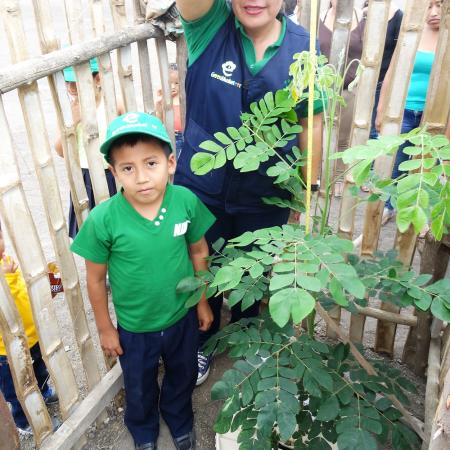
Soy cultivador de hortalizas, patatas de siembra y bulbos de flores. Viajaba por todo el mundo para reunirme con mis clientes y vender mis productos. Cuando me enfrenté a la escasez de agua, la pobreza extrema, el hambre, las situaciones sin esperanza en países erosionados me sentí avergonzado como ser humano y tuve una especie de rabia y tristeza.
Esto fue lo que me motivó a dar un gran paso. Tomé la decisión de vender mi empresa internacional en 2003, porque sencillamente no podía mantenerme al margen y mirar hacia otro lado ante estas terribles situaciones por más tiempo.
Por lo tanto, me levanté y tomé la decisión de utilizar mis conocimientos como cultivador internacional en los países erosionados. No puedo entender cómo podemos aceptar que cientos de millones de niños vivan sin alimentos suficientes, sin agua sana, sin educación. Ahora dedico mi vida a ayudar a resolver estos problemas de forma positiva para un futuro mejor.


